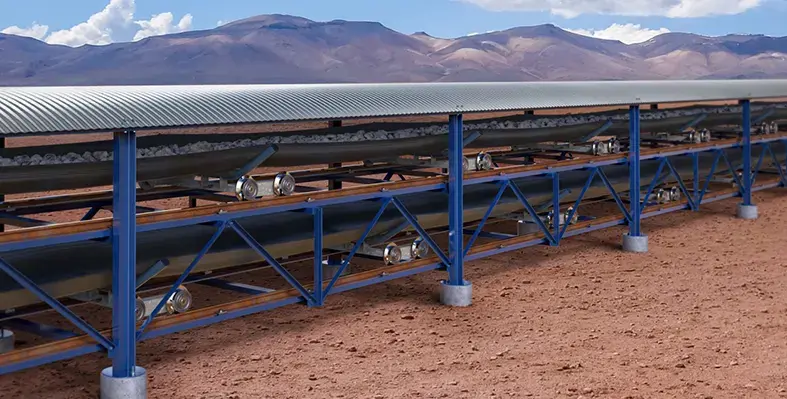An African mine will be among the first adopters of the innovative Rail-Running Conveyor (RRC) technology, commercialised by full flowsheet provider FLS in collaboration with the University of Newcastle, Australia
Designed to dramatically reduce energy consumption, improve safety and cut capital and operating expenditure, Rail-Running Conveyors are a gamechanger for mines which must rely on extended conveying distances to move material. Any mine that carries substantial tonnages over more than 500 to 1,000 m can achieve far higher efficiencies using this technology.
The first full-scale operational system will be commissioned in southern Africa in mid-2025. It is designed to carry 5,000 mtph of copper ore over a 3,25 km run, and is expected to save approximately US$1mn each year in power costs when compared to a conventional trough conveyor.
A second system, destined for the same mining customer at a mine in the Americas, has also been under construction and will carry around 13,000 mtph, also delivering significant power savings and safety improvements.
The energy losses incurred by an RRC is anything between one-fifth to one-tenth of those experienced by traditional trough and pipe conveyor systems respectively. The friction losses on a conventional long distance conveyor largely determine the power capacity that must be installed, the size of the structures required and the downtime incurred to maintain and replace pulleys and drives. Reducing these energy losses therefore has a positive knock-on effect on the costs of a range of other aspects.
Customers achieve savings on the scope of the conveyor equipment itself, the cut-and-fill civils requirements, the volumes of concrete used, the strength of the belt and the number of drive stations necessary. Due to the lower tension acting on the conveyor belt, a lower rating of belt is possible. Faster speeds and a deeper trough also mean that a narrower belt may suffice for the same throughput. Importantly, the rating of the drives does not need to be as high.
Where a 6MW drive may be specified for a conventional conveyor, for instance, this technology may allow a 2MW drive to be installed. This then has further positive impacts on the ratings required for motors, transformers, E-houses and power supply.
The head and the tail of an RRC remain the same as in traditional systems with the rail-running section making up the bulk of the distance. The basic mode of transport is steel-wheel-on-steel-rail instead of a belt running over idlers. This fundamental difference is what cuts energy consumption so drastically.
The system uses small carriages to carry the belt and these are automatically exchanged at maintenance houses when required. This removes the safety risks associated with personnel changing out idlers out along the length of the conveyor. Having fewer transfer points also has a safety benefit as these can be sources of injury during maintenance as well as health threats from dust exposure.






